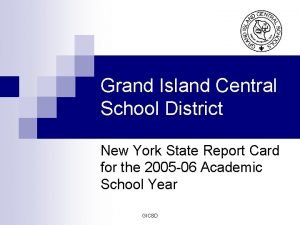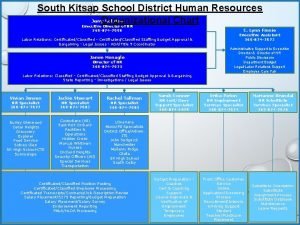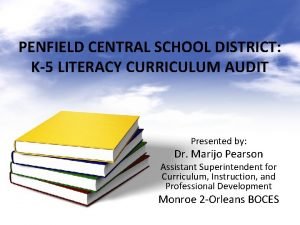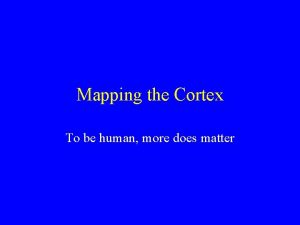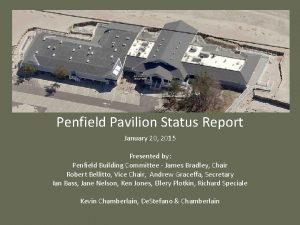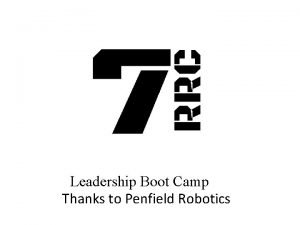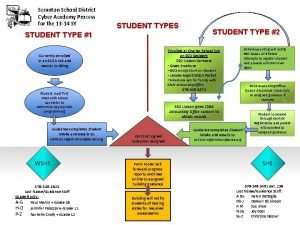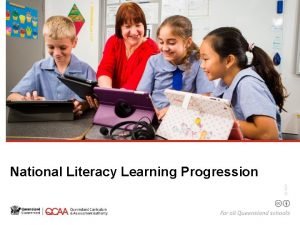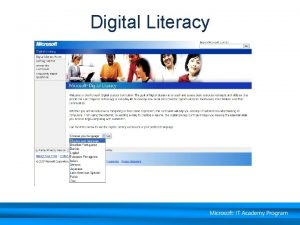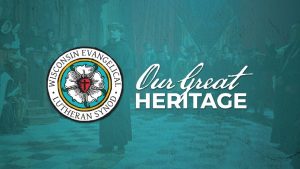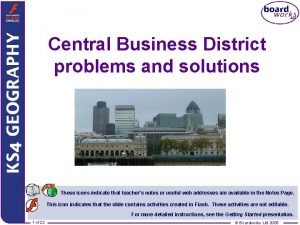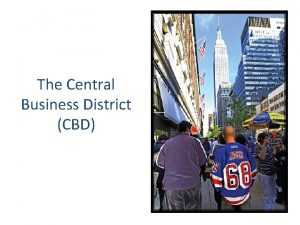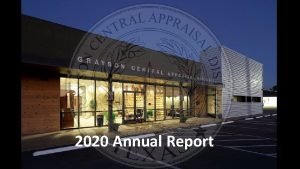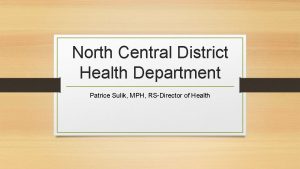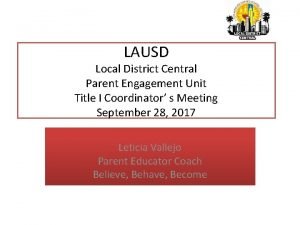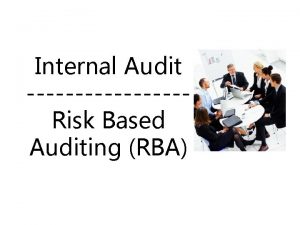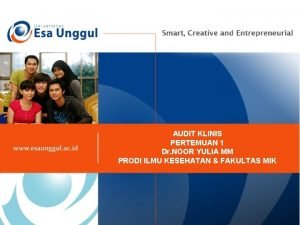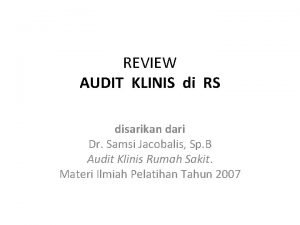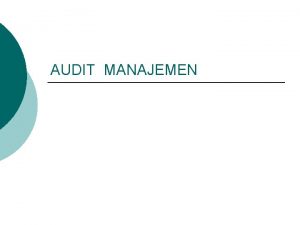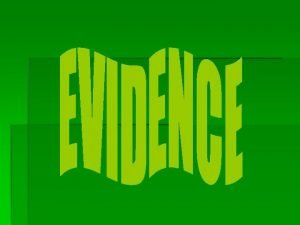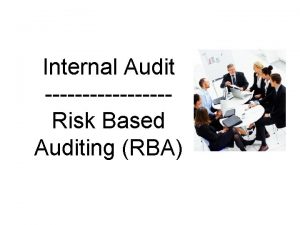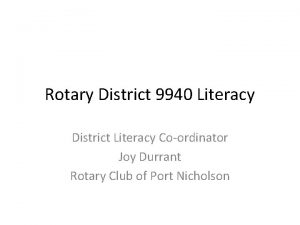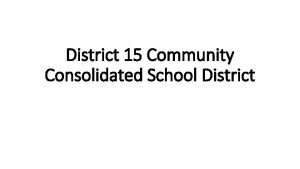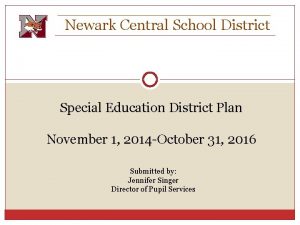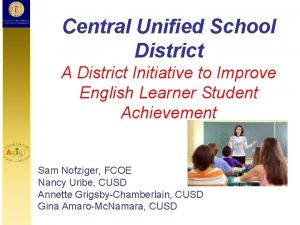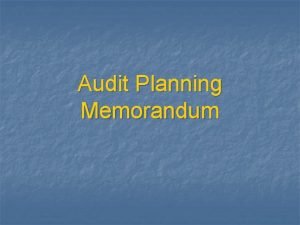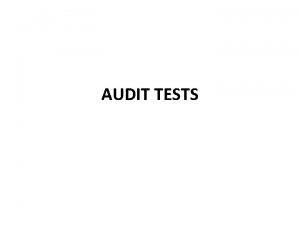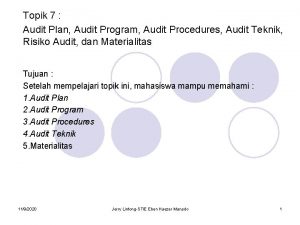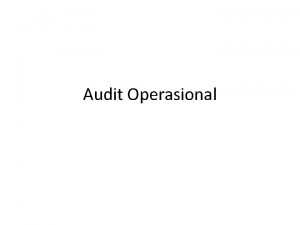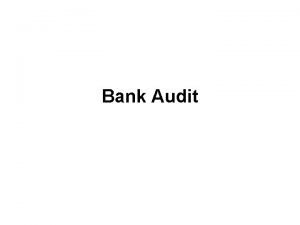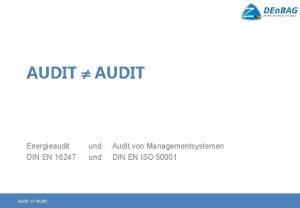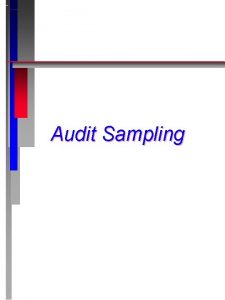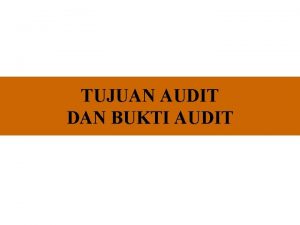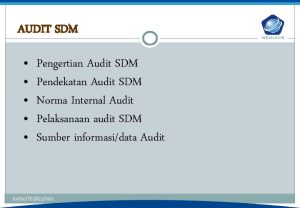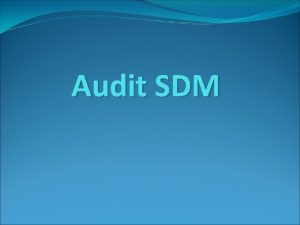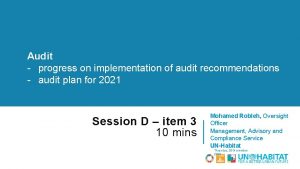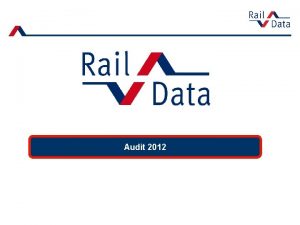PENFIELD CENTRAL SCHOOL DISTRICT K5 LITERACY CURRICULUM AUDIT
































- Slides: 32

PENFIELD CENTRAL SCHOOL DISTRICT: K-5 LITERACY CURRICULUM AUDIT Presented by: Dr. Marijo Pearson Assistant Superintendent for Curriculum, Instruction, and Professional Development Monroe 2 -Orleans BOCES

Penfield K-5 Literacy Audit: The Purpose q The Literacy Audit was designed to answer the following four key questions: 1. What resources are available to teachers (curriculum documents, texts, leveled readers, software programs, etc. ) in grades k-5 to guide their Balanced Literacy instruction? 2. How do teachers prioritize the use of time and resources? What part(s) of Balanced Literacy do teachers focus on the most and what resources do they use most often?

Penfield K-5 Literacy Audit: The Purpose (continued) q The Literacy Audit was designed to answer the following four Key questions: 3. What resources will be most advantageous to teaching Balanced Literacy K-5? 4. What do teachers need to ensure their Literacy instruction prepares students to successfully read, write, listen and speak?

Penfield K-5 Literacy Audit: The Process q A systemic approach to data collection was used to address the four key questions and consisted of : • Examination of District ELA Curriculum documents • Focus Group Interviews with Grade-Level Teams from each building • Focus Group Interviews with Librarians and Reading Specialists

Penfield K-5 Literacy Audit: The Process (Continued) q A systemic approach to data collection was used to address the four key questions and consisted of : ØInterviews with Building Principals, Director of Humanities, and Instructional Specialist ØInformal Classroom visits during ELA blocks ØReview of resources and materials available ØElectronic Teacher Survey

Executive Summary: Question 1 q What resources are available to teachers (curriculum documents, texts, leveled readers, software programs, etc. ) in grades k-5 to guide their Balanced Literacy instruction? Ø A majority of the K-5 teachers in all four of the Penfield Central School District Elementary schools reported that they have ample resources to teach reading, writing and the study of words. Ø Resources varied greatly from school to school and grade level to grade level. Penfield Central on the whole has an abundance of resources, however the resources are not equitable across all buildings, grade levels, or departments.

Executive Summary: Question 1 q What resources are available to teachers (curriculum documents, texts, leveled readers, software programs, etc. ) in grades k-5 to guide their Balanced Literacy instruction? Ø In some buildings teachers noted that they lacked access to leveled texts (nonfiction) at their students instructional levels (especially intermediate grade levels). Ø A review of the book rooms, classrooms, and resources available through the school libraries showed vast collections of leveled texts both fiction and nonfiction, and access to software programs such as accelerate reader, etc. . that benefit their students.

Executive Summary: Question 1 (continued) q What resources are available to teachers (curriculum documents, texts, leveled readers, software programs, etc. ) in grades k-5 to guide their Balanced Literacy instruction? Ø The use of a textbook series or anthologies varied greatly among the schools, and teachers had very strong views both for and against adoption of such a series. Ø Most K-5 teachers reported that they are familiar with the district curriculum documents, but many said that the document is too vast and not specific enough to use to guide their instruction on a regular basis.

Executive Summary: Question 2 q How do teachers prioritize the use of time and resources? What part(s) of Balanced Literacy do teachers focus on the most and what resources do they use most often? Ø Teachers reported that they prioritize their time based on the master schedule. The master schedules varied from building to building and grade level to grade level. ØTeachers also noted that within their formal “blocks” of time devoted to each component of literacy that they had the discretion to spend time on areas that students need to grow in and to integrate reading, writing, and the study of words the best they can.

Executive Summary: Question 2 (Continued) q How do teachers prioritize the use of time and resources? What part(s) of Balanced Literacy do teachers focus on the most and what resources do they use most often? ØIn the Focus group interviews, and during classroom visits, it was clear that teachers spent a vast majority of their ELA block on Reading. ØWriting was also an integral part of their literacy work. Many teachers noted that they often integrate writing into their reading block and don’t always have enough time to teach writing outside of that time. Ø The amount of time teachers spent focusing on the study of words varied greatly.

Executive Summary: Question 2 (Continued) q How do teachers prioritize the use of time and resources? What part(s) of Balanced Literacy do teachers focus on the most and what resources do they use most often? ØA majority of teachers used leveled books both fiction and nonfiction for their reading blocks. Some teachers used a common text series (anthology) for reading, writing, and the study of words. Within the group of teachers who used the common resource, there was inconsistency in how they used the resource.

Executive Summary: Question 2 (Continued) q How do teachers prioritize the use of time and resources? What part(s) of Balanced Literacy do teachers focus on the most and what resources do they use most often? ØWriting resources varied, with a majority using 6+1 Writing Traits. Some teachers reported that they were dissatisfied with their writing program and would like more consistent resources and lesson ideas to teach the process of writing. ØThere was a great deal of inconsistency in regard to vocabulary and the study of words and the resources teachers used.

Executive Summary: Question 3 q What resources will be most advantageous to teaching Balanced Literacy K-5? Ø During focus group interviews and responses to the electronic teacher survey, the resources that would be most advantageous to teaching reading, writing, vocabulary and the study of words varied greatly from building to building, grade level to grade level, and teacher to teacher.

Executive Summary: Question 3 q What resources will be most advantageous to teaching Balanced Literacy K-5? Ø Although there wasn’t agreement on the resources that would be most advantageous, the majority of teachers noted that they like the autonomy to use resources that they feel work best for their students. Ø Teachers also indicated that it would be beneficial to have clearly defined benchmarks for students in the areas of reading, writing, and the study of words.

Executive Summary: Question 3 (continued) q What resources will be most advantageous to teaching Balanced Literacy K-5? Ø Teachers noted that the district should provide leadership on what scientifically-based resources teachers should use for each component of literacy and to provide follow up professional development to ensure consistency. Ø Teachers noted that they wanted autonomy but recognized the need for consistency and flexibility based upon resources currently available.

Executive Summary: Question 3 (continued) q What resources will be most advantageous to teaching Balanced Literacy K-5? Ø Many teachers voiced their dissatisfaction with the volume of information in the curriculum documents and suggested that a scope and sequence document would be beneficial and provide consistency across grade levels and buildings.

Executive Summary: Question 4 q What do teachers need to ensure their Literacy instruction prepares students to successfully read, write, listen and speak? ØTeachers noted that to ensure their literacy instruction prepares students successfully to read, write, listen and speak that the curriculum documents need to provide more guidance on how and what to teach at each grade level.

Executive Summary: Question 4 (continued) q What do teachers need to ensure their Literacy instruction prepares students to successfully read, write, listen and speak? ØDuring focus group interviews and on the electronic survey, teachers shared that the district should provide high quality, on-going professional development in all areas of literacy, including reading, writing, and the study of words.

Executive Summary: Question 4 (continued) q What do teachers need to ensure their Literacy instruction prepares students to successfully read, write, listen and speak? ØTeachers noted that to ensure that all students can successfully read, write, listen and speak there needs to be more collaboration time among all grade levels and all buildings. ØTo ensure the literacy success of all students, teachers suggested that consistent progress monitoring tools be used across all elementary buildings.

The Results Focus Group Interviews q In each of the four elementary buildings focus group interviews were held with grade level teams, reading specialists, and Librarians. Ø Focus group interviews followed a semi-structured model with teachers having the opportunity to reflect and report on 12 questions. Two questions were central to the audit – what were the strengths the district ELA K-5 program, and what were the areas of growth? Ø One common theme that emerged across grade levels was the lack of consistency district-wide in regard to K-5 ELA curriculum.

The Results Focus Group Interviews q In each of the four elementary buildings focus group interviews were held with grade level teams, reading specialists, and Librarians. Ø Areas of strength noted across all groups included: Ability of teachers to make instructional decisions based upon needs of their students, integration of social studies content into ELA instruction, 6+1 Writing Traits professional development, dedicated and hard working staff, leveled book rooms, support of the librarians.

The Results Focus Group Interviews q In each of the four elementary buildings focus group interviews were held with grade level teams, reading specialists, and librarians. Ø Areas of growth noted across all grade levels included lack of consistency in resources and expectations across all elementary buildings, curriculum documents are too cumbersome, consistent grade level benchmarks and essential skills are needed, school report cards need to be revised, and there needs to be full-day kindergarten.

The Results On-Line Teacher Survey q A series of 9 questions were developed to elicit information about the state of the Penfield Central School District K-5 literacy program. Ø Topics included perception data on curriculum, resources, professional development and instructional decisions. Ø A total of 83 teachers (includes reading specialists and librarians) responded to the survey.

The Results On-Line Teacher Survey Question #4

The Results On-Line Teacher Survey q Question #5

The Results On-Line Teacher Survey q Question #6

The Results On-Line Teacher Survey q Question #7

Recommendations q To create an environment of collaboration and sharing of best practices among the four elementary building principals and their staff. q To provide district leadership in the area of K-5 ELA curriculum that promotes consistency in the ELA K-5 program, resources and expectations. q Expanding Professional Development offerings to include all components of balanced literacy (with an emphasis on guided reading) and to offer on-going job embedded professional development to all K-5 teachers.

Recommendations q To ensure that the district is meeting the professional development needs of all of its teachers, the district should consider surveying its teachers on a regular basis. q Revise curriculum documents so that they are aligned with the Common Core Learning Standards; include grade level benchmarks and essential skills; and a scope and sequence so teachers are able to use the document consistently and to inform instruction on a regular basis.

Recommendations q Provide more time for teachers to collaborate with their grade level colleagues on a regular basis to review/analyze data, develop common units of study and formative assessments, and consistent progress monitoring tools. Regular collaboration times should also focus on sharing of best practices in reading, writing, and the study of words. Collaboration with all four buildings should also occur 2 -4 times per year.

Recommendations q In regard to adopting a common text book series or anthology, it is not recommended that the district move forward with this at this time. The district has a wealth of resources and the cost to adopt a common text book series (or anthology) would not be fiscally prudent. q The adoption of a common text book series could be revisited after the district makes revisions to its curriculum documents, professional development offerings, and does a complete evaluation of the resources in all of their buildings.

Next Steps q The grade level results of the K-5 ELA Curriculum Audit will be shared with teachers in each building. q A comprehensive report of the K-5 ELA Curriculum Audit will be submitted to the district by mid June of 2011. q Questions about the Audit process or findings may be directed to Dr. Marijo Pearson, Monroe 2 -Orleans BOCES.
 Gicsd
Gicsd Orchard park central school district
Orchard park central school district Central kitsap school district human resources
Central kitsap school district human resources St joseph church penfield ny
St joseph church penfield ny Penfield grade 5 answer key
Penfield grade 5 answer key Homunculus of primary somatosensory cortex
Homunculus of primary somatosensory cortex Penfield pavilion
Penfield pavilion Penfield robotics
Penfield robotics Media literacy vs information literacy comparison
Media literacy vs information literacy comparison Venn diagram of media information and technology literacy
Venn diagram of media information and technology literacy Characteristic of people media
Characteristic of people media Cyber literacy and digital literacy
Cyber literacy and digital literacy Lodi unified summer school
Lodi unified summer school Uniform indian school al wadi al kabir
Uniform indian school al wadi al kabir Scranton school district cyber school
Scranton school district cyber school Literacy progressions acara
Literacy progressions acara Digital literacy standard curriculum version 4
Digital literacy standard curriculum version 4 South central district wels
South central district wels Birmingham central business district
Birmingham central business district Central business district characteristics
Central business district characteristics Grayson county tax appraisal
Grayson county tax appraisal Function of central business district
Function of central business district North central district health department ct
North central district health department ct Lausd central district
Lausd central district Perbedaan audit konvensional dengan audit berbasis risiko
Perbedaan audit konvensional dengan audit berbasis risiko Audit informasi klinis adalah
Audit informasi klinis adalah Beda audit medis dan audit klinis
Beda audit medis dan audit klinis Penyelesaian audit dan tanggung jawab pasca audit
Penyelesaian audit dan tanggung jawab pasca audit Konsep dasar audit manajemen
Konsep dasar audit manajemen Prosedur audit bottom-up dan audit top-down
Prosedur audit bottom-up dan audit top-down Auditor definition
Auditor definition Perbedaan audit konvensional dengan audit berbasis risiko
Perbedaan audit konvensional dengan audit berbasis risiko
